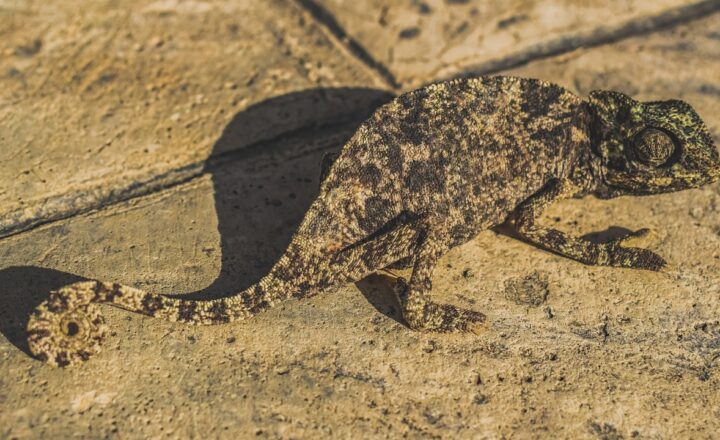Why Some Genes Are Passed Down Through Generations and Others Aren’t
November 12, 2024

The concept of heredity has fascinated scientists, philosophers, and everyday people for centuries. Why do certain traits persist in family lineages while others seem to fade into oblivion? The answer lies in the intricate relationship between genetics, environment, and evolution. In this article, we will delve into the mechanisms of heredity, the role of genes in determining traits, and the factors influencing which genes are passed down through generations.
1. Understanding Genes and Heredity
Genes are the fundamental units of heredity, composed of DNA (deoxyribonucleic acid). They carry the instructions for the development, functioning, growth, and reproduction of all living organisms. Each individual inherits a unique set of genes from their parents, comprising a mix of both maternal and paternal DNA.
Heredity refers to the passing of traits from parents to offspring, a process governed by the laws of genetics. Traits can be physical, such as eye color and height, as well as behavioral or biochemical.
As we explore why some genes persist while others fade, we will focus on three critical concepts: dominance, genetic drift, and natural selection.
2. Dominance: The Power Struggle Among Genes
Not all genes are created equal; some can dominate over others. This concept, known as dominance, plays a significant role in which traits are expressed in an individual. For instance, a dominant allele may completely overshadow a recessive allele, leading to the manifestation of the dominant trait.
To illustrate:
- Dominant Traits: Traits that are expressed even when only one copy of the allele is present. For example, brown eyes (B) are dominant over blue eyes (b). An individual with either BB or Bb will have brown eyes.
- Recessive Traits: Traits that are expressed only when both alleles are recessive. So, an individual must have the bb genotype to have blue eyes.
Dominance explains why some traits are more common within families. Dominant traits will typically be passed down more frequently than recessive traits, which may become rare unless both parents contribute the recessive allele.
3. Genetic Drift: The Luck of the Draw
Genetic drift refers to the random changes in allele frequencies within a population. Unlike natural selection, which involves a process of survival and reproductive success based on advantageous traits, genetic drift is largely a matter of chance.
This phenomenon is particularly significant in small populations, where random events can drastically alter allele frequencies.
For example:
- If a gene that influences a particular trait is present in a small population, a catastrophic event might eliminate individuals with that trait, causing it to disappear entirely from subsequent generations.
- Conversely, a trait that is less advantageous could become prevalent purely by chance if individuals possessing it survive random events.
Genetic drift showcases how some genes may not be passed down due to the arbitrary nature of survival and reproduction in small populations, which can lead to significant changes over time.
4. Natural Selection: Survival of the Fittest
Natural selection is the process by which certain traits become more advantageous in a given environment, thereby increasing the likelihood that these traits will be passed on to future generations. It operates on the principle of “survival of the fittest,” where individuals with advantageous traits are more likely to survive and reproduce.
For instance:
- Adaptations: Traits that provide a survival advantage – like faster speed in prey animals – are more likely to be inherited. Over time, the frequency of these advantageous genes increases within the population.
- Environment Influence: Changes in the environment can shift the balance, making previously advantageous genes less favorable, leading to a decline or disappearance of those genes from the gene pool.
Natural selection explains why certain traits, especially those that enhance survival and reproductive success, are prominent in populations, while less advantageous traits may vanish over time.
5. Gene Flow and Migration: Mixing Gene Pools
Gene flow, or gene migration, occurs when individuals from one population migrate to another, introducing new alleles into the gene pool. This process can enhance genetic diversity, but it can also dilute specific traits over generations. Some traits may diminish in frequency, while others may thrive, leading to a dynamic exchange of genes.
For instance:
- Population Interbreeding: When two distinct populations interbreed, the resulting offspring may express traits from both gene pools. This can lead to the prominence of traits from one group becoming less common due to the integration of new genetic material.
- Vulnerability to Extinction: If a particular trait is unique to a population and not found in the migrating individuals, it may decrease over time as gene flow occurs, particularly if the migrating group’s traits are favored in the new environment.
Gene flow significantly influences which traits persist and which fade out, as populations adapt to changing environments and increase genetic diversity.
6. The Role of Epigenetics: Beyond DNA
Epigenetics is a fascinating area of study focusing on how environmental factors can influence gene expression without altering the DNA sequence. This can include factors such as stress, nutrition, and exposure to toxins.
Epigenetic changes can potentially be inherited, thereby affecting which traits may appear in subsequent generations.
Key points include:
- Environmental Influence on Gene Expression: Certain environmental factors can turn genes on or off, affecting whether a trait manifests. For example, a child raised in a nutritionally rich environment may express genes related to growth more prominently than a child from a deprived background.
- Transgenerational Epigenetic Inheritance: Some epigenetic changes can be passed down to offspring, suggesting that experiences can impact future generations at a genetic level.
Epigenetics adds an additional layer of complexity to genetics, providing insights into how genes can be influenced and potentially inherited based on environmental experiences, creating a dynamic interplay between nature and nurture.
Conclusion: The Dance of Genes Through Time
Understanding why some genes are passed down through generations while others are not invites us to explore the intricate mechanisms at play. Dominance, genetic drift, natural selection, gene flow, and epigenetics all contribute to this complex tapestry of heredity. Whether advantageous traits thrive or recessive traits fade into obscurity depends on a multitude of factors, including the environment, chance, and evolutionary pressures. As science continues to unravel the mysteries of genetics, we recognize that our understanding of heredity evolves alongside our knowledge of the living world. Embracing this complexity allows us to appreciate the diverse traits that shape our species and the lineage from which we all descend.
With ongoing research in genetics and epigenetics, the future holds exciting discoveries about how traits are inherited, expressed, and may adapt to changing circumstances. Understanding these principles not only enhances our comprehension of biology but also shapes our view of what it means to be human in a world where genes and environments intricately dance together through time.








